Tea gardens in our country are widely distributed, with varying terrain and climate between different regions, leading to a diverse range of weeds that are difficult to control. Weeds in tea gardens compete with tea plants for air, water, nutrients, sunlight, and other resources. Additionally, many weeds serve as intermediate hosts for pests and diseases that affect tea plants, severely impacting both the quality and yield of tea. Studies have shown that tea gardens without any weed management can experience a reduction in yield of 14.98% to 19.84% compared to those with regular weed control.
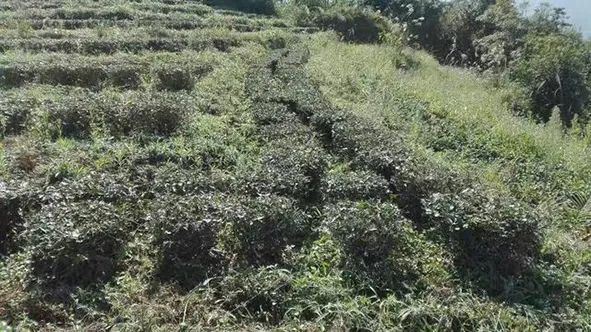
Chemical weed control has been one of the primary methods for weed control in Chinese Tea gardens, known for its effectiveness and low cost. However, long-term use of chemical herbicides in tea gardens has significantly impacted the stability of the tea garden ecosystem and posed significant risks to the safety and quality of tea. With increasing public awareness of health and environmental protection, it is imperative to research and promote green weed control technologies in tea gardens.
I. The Development of Weed Control Technology in Chinese Tea Gardens
1. Traditional Manual Weed Control Stage
In the early days, Chinese tea gardens primarily relied on manual methods to remove weeds, including hand-pulling, cutting, and tilling. Although manual weed control is simple and safe, it requires a large labor force, high investment, and low efficiency, making it unsuitable for modern tea garden weed management needs.
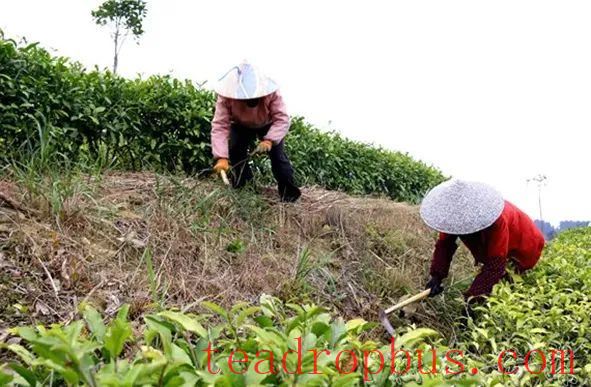
2. Chemical Weed Control Stage
After the 1960s, chemical weed control gradually became popular in Chinese tea gardens. Commonly used chemical herbicides at the time included simazine, atrazine, prometryn, glyphosate, paraquat, and dalapon. Chemical herbicides offered advantages such as good weed control efficacy, long-lasting effects, and low costs. By the 1980s, chemical herbicides were widely adopted in Chinese tea gardens, becoming the main method for weed control.
3. Formation of the Green Weed Control Concept in Tea Gardens
During the late 1980s and 1990s, international communities proposed sustainable development concepts and advocated reducing the use of chemical pesticides globally. People began to recognize the harm of using chemical herbicides in tea gardens. To avoid environmental pollution and risks to tea quality and safety associated with the use of chemical herbicides, an integrated approach was adopted, including agricultural, physical, biological, and chemical ecological methods, forming the concept of green weed control in tea gardens as an alternative to chemical weed control.
II. Current Application Status of Green Weed Control Technologies in Chinese Tea Gardens
1. Mechanical Weed Control
Mechanical weed control involves the use of agricultural machinery to remove weeds, which is a non-chemical method. Currently, commonly used weed control machines in tea gardens can be categorized into tillage-type weed control machines and mowing-type weed control machines based on their principles.
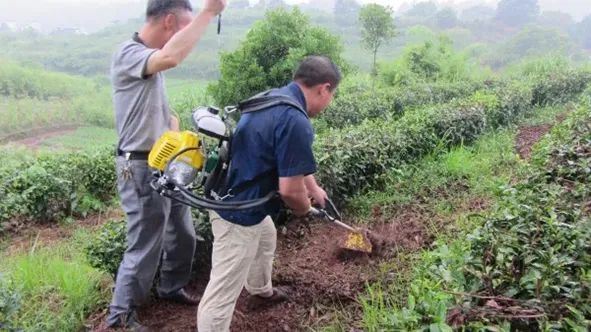
2. Manual Mulching Weed Control
Manual mulching weed control involves covering the tea garden with non-living materials, such as straw, rice husks, black film, or weed control fabric, to block light, heat, space, and other resources needed for weed growth, thus inhibiting weed growth. Manual mulching weed control is simple, easy to implement, and highly effective, making it suitable for young tea gardens.
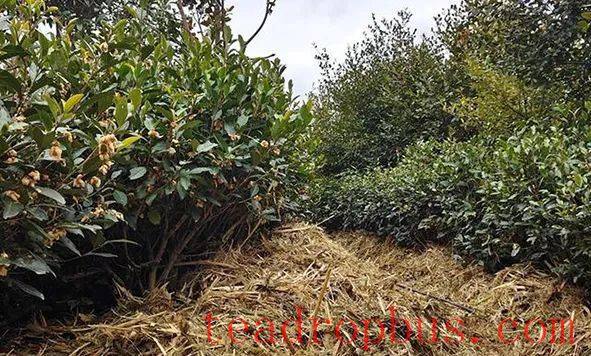
3. Natural Herbicides for Weed Control
Natural herbicides refer to herbicides developed from secondary metabolites produced by plants, animals, and microorganisms with weed-inhibiting properties. Compared to chemical herbicides, natural herbicides are more easily degraded in the natural environment and have lower toxicity, making them environmentally friendly. Natural herbicidal substances have a wide range of sources, and currently, there is more research on plant-derived and microbe-derived natural active substances.
(1) Plant-Derived Herbicides for Weed Control
Plant-derived herbicides are bioactive substances extracted from natural plants with weed-controlling properties, or herbicides obtained through derivatization using these substances as lead compounds. Plant-derived herbicidal substances come from a wide variety of sources, with over 2,000 naturally occurring substances with weed-inhibiting activity found in more than 30 plant families worldwide. These substances can be classified into terpenoids, alkaloids, coumarins, etc. Plant-derived herbicides have the advantages of low toxicity and low residue, being safe and highly effective, and they have received much attention in the field of weed control. However, there have been no reports of the application of plant-derived herbicides in tea gardens yet.
(2) Microbial-Derived Herbicides for Weed Control
Microbial-derived herbicides are a class of herbicides produced using microbes or their tissues and metabolites. The microbes used for development are mainly plant pathogens, and currently, there is more research on fungal, bacterial, and actinomycete-derived herbicides.
(3) Mineral-Derived Herbicides
Aldi is a mineral-derived herbicide reported in the literature for use in tea gardens, with a main component of 57% paraffin oil. Aldi is a non-selective, foliar-contact herbicide that effectively controls annual and perennial broadleaf and grassy weeds, as well as lichens, mosses, ferns, and other lower plants. After application, Aldi shows quick results, with most weeds drying up on the day of application. However, the current cost of using Aldi for weed control in tea gardens is relatively high, making it difficult to promote its use.
4. Biological Weed Control
Biological weed control involves using organisms that are detrimental to weed growth, such as other grass species, crops, and herbivorous animals, to control weed occurrence and damage. Biological control has the advantages of not polluting the environment, not causing phytotoxicity, and having high economic benefits. It is also simpler than agricultural and physical control methods and is an important direction for future research on weed control.
(1) Intercropping for Weed Control
After grass grows in tea gardens, it occupies the blank habitats in the tea garden with a certain biomass, forming dominant species, preventing weeds from obtaining sufficient light, water, space, and other growth conditions, thereby inhibiting their germination and growth. Many grass species have been introduced into tea gardens, commonly used grass species include grass species such as fescue, ryegrass, pennisetum, and creeping bentgrass; leguminous species such as white clover, peanut, alfalfa, Senna tora, and vetch; tea gardens can also intercrop crops with certain economic value, such as soybeans, mung beans, peanuts, buckwheat, taro, and medicinal plants like Desmodium styracifolium and zinnia, to suppress weed growth.
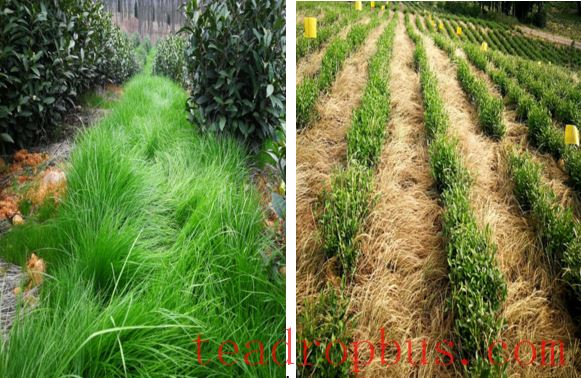
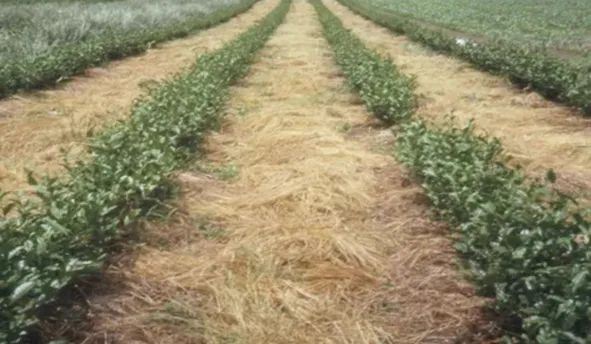
(2) Insect Weed Control
Insect weed control utilizes insects with host-specific feeding habits to feed on weeds to achieve weed control. After release, the insects gradually reach a balance with the weeds and generally play a long-term role once released. Using insects for weed control is one of the earliest techniques applied in biological weed control, but it is mainly used to control invasive weeds, such as using the ragweed stem borer to control the globally problematic weed ragweed. There have been no reports of this technique being used in tea gardens.